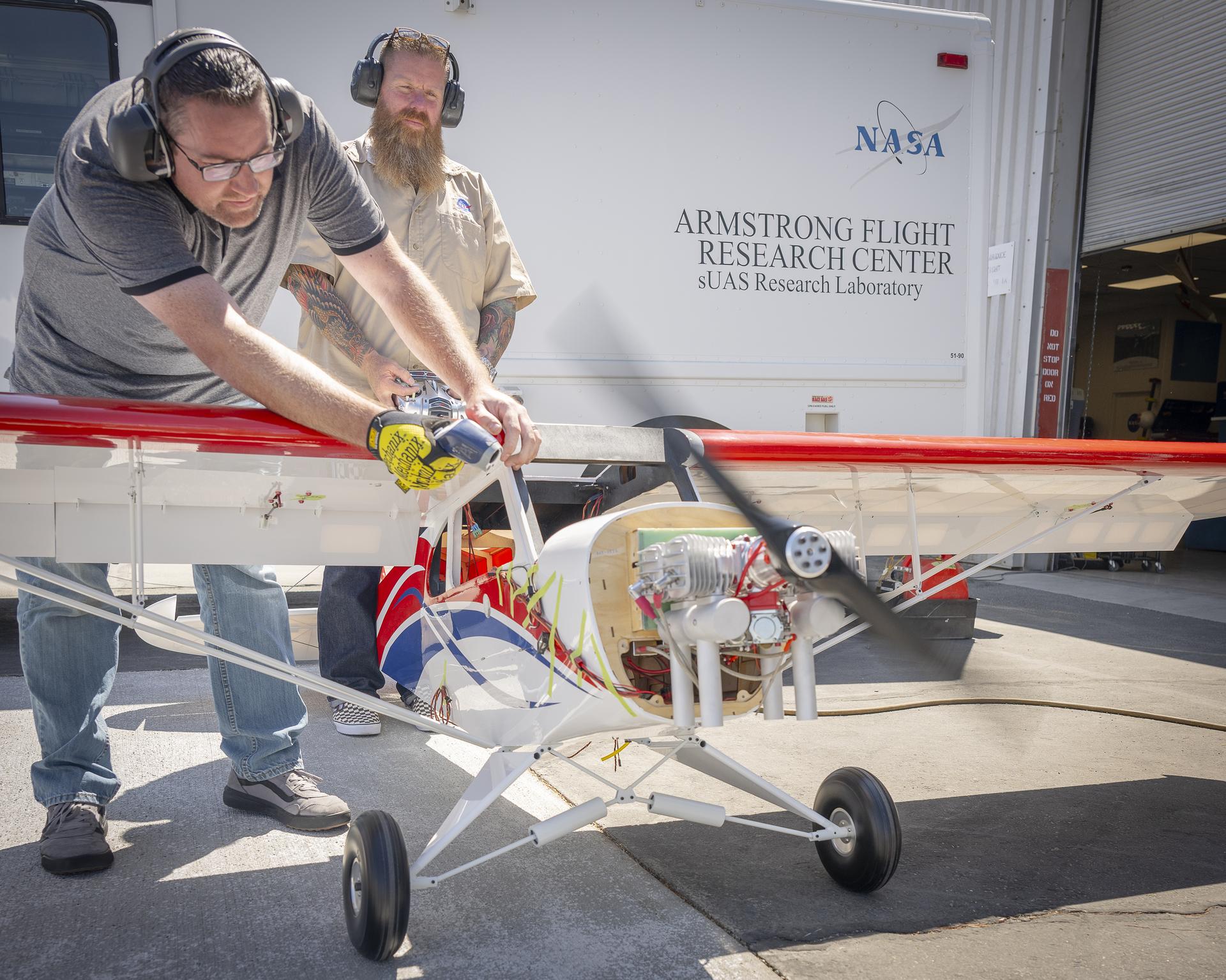Innovative Subscale Aircraft Development at NASA Armstrong
At NASA’s Armstrong Flight Research Center in Edwards, California, a groundbreaking subscale aircraft is under construction. This project aims to enhance flight research capabilities, providing a more adaptable and economical alternative to traditional crewed missions.
Leading the Charge: Hall and Link
Justin Hall, the chief pilot at NASA Armstrong’s Dale Reed Subscale Flight Research Laboratory, alongside Justin Link, an expert in piloting small uncrewed aircraft, are spearheading this initiative. They are upgrading the center’s outdated MicroCub with a more advanced model, designed to be time-efficient and cost-effective. This new aircraft boasts a wingspan of approximately 14 feet, a length of nine-and-a-half feet, and a weight of around 60 pounds.
Accelerating Innovation in Aerodynamics
The subscale laboratory is a hub for innovation, utilizing small, remotely piloted aircraft to explore new aerodynamic designs, technologies, and flight control systems. Named in honor of aerospace pioneer Dale Reed, the lab facilitates rapid prototyping and risk mitigation before advancing to larger-scale or crewed testing. This work is crucial in advancing technology readiness for NASA’s terrestrial and extraterrestrial missions.
Enhancements and Flexibility
Hall and Link are transforming an existing subscale aircraft kit by integrating a more robust engine, an autopilot system, advanced instrumentation, and a strengthened structure. This upgraded aircraft will provide enhanced flexibility for flight experiments, allowing for more frequent and cost-effective testing compared to manned aircraft.
Future Applications: Aerial Recapture
One promising application is the Robust Autonomous Aerial Recapture project, which employs sensors and video technology with sophisticated programming to enable mid-air capture. This system uses a magnetic connection mechanism between two aircraft.
This innovative capability could revolutionize future scientific missions, where a mothership deploys drones to gather samples, recharge, and redeploy, optimizing fuel use, reducing costs, and boosting efficiency. The aerial recapture initiative is supported by the NASA Armstrong Center Innovation Fund and the Space Technology Mission Directorate.
